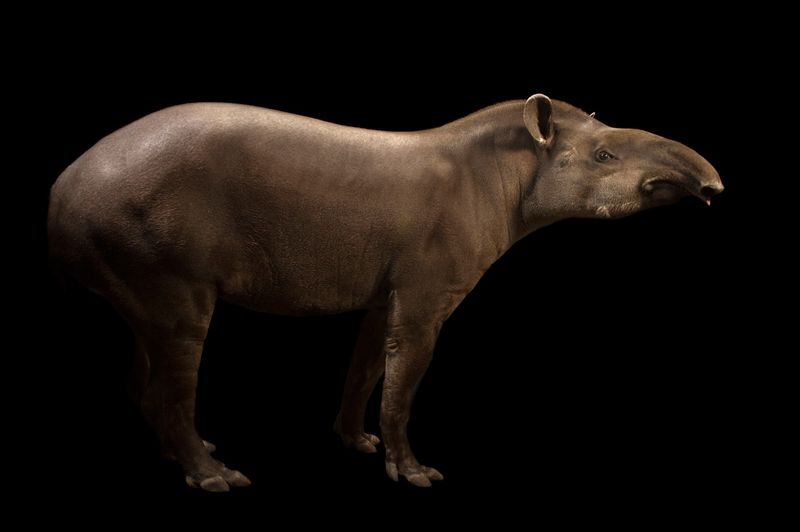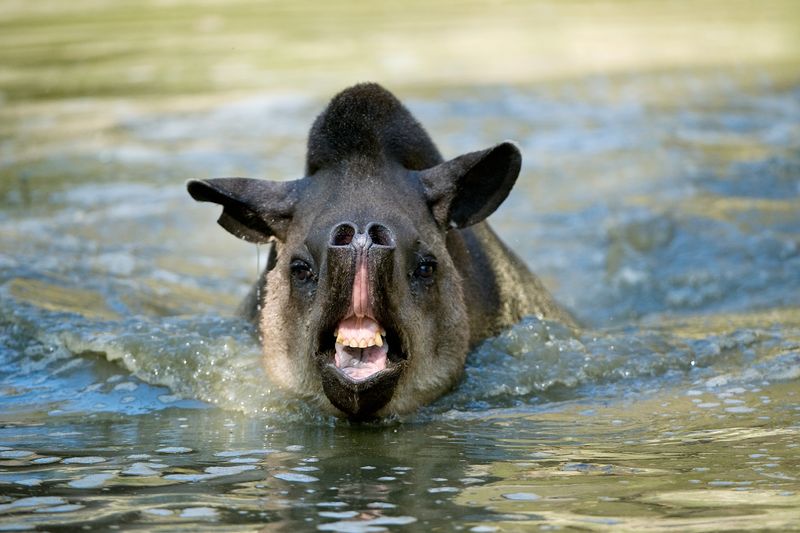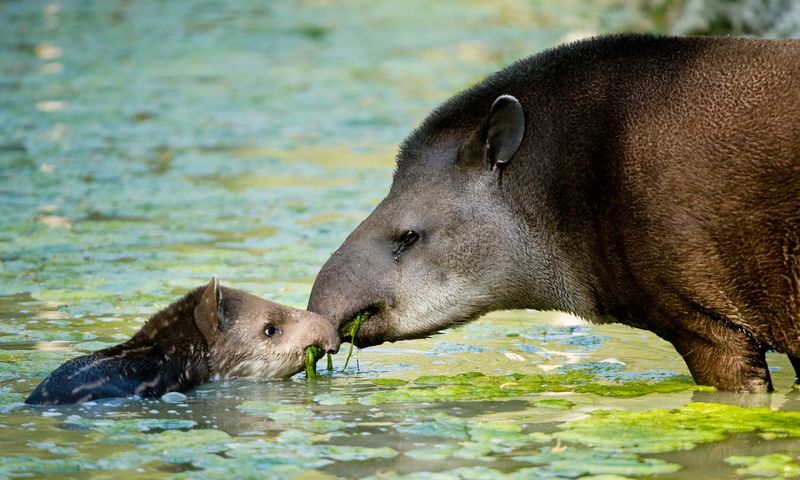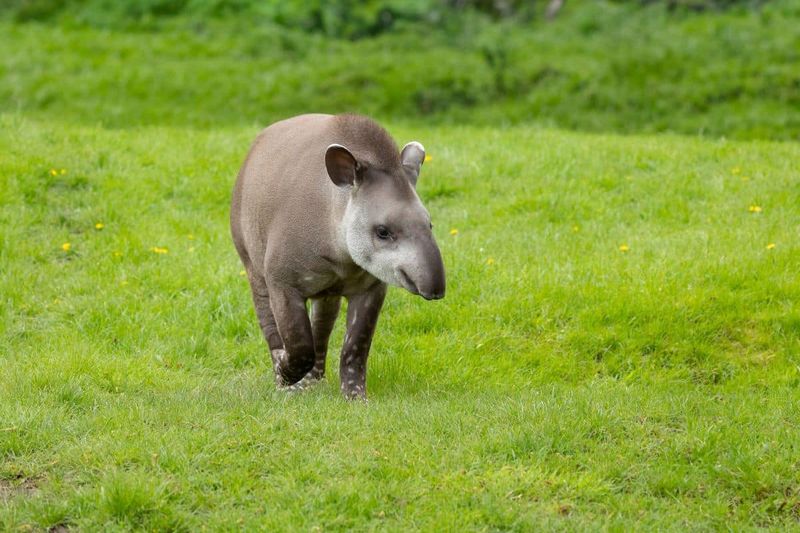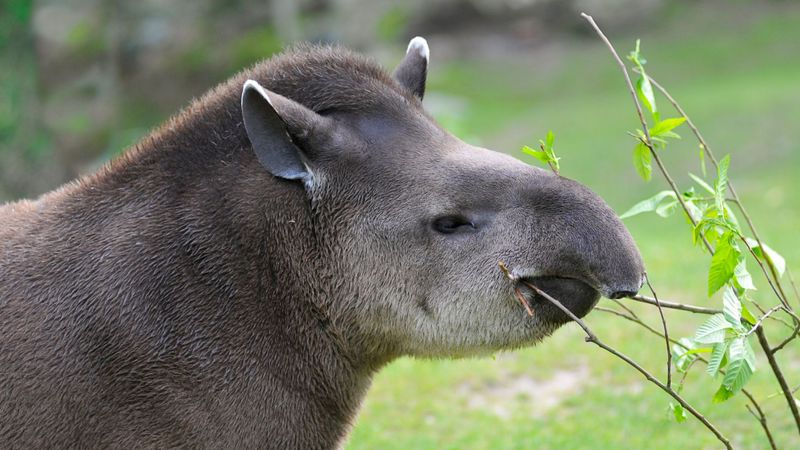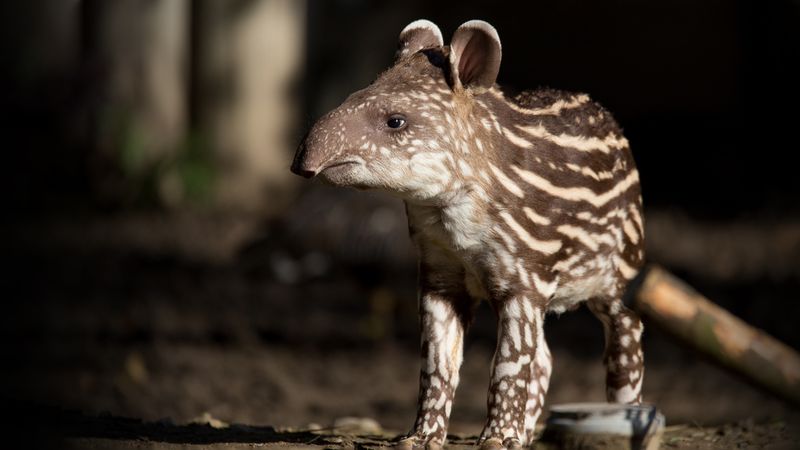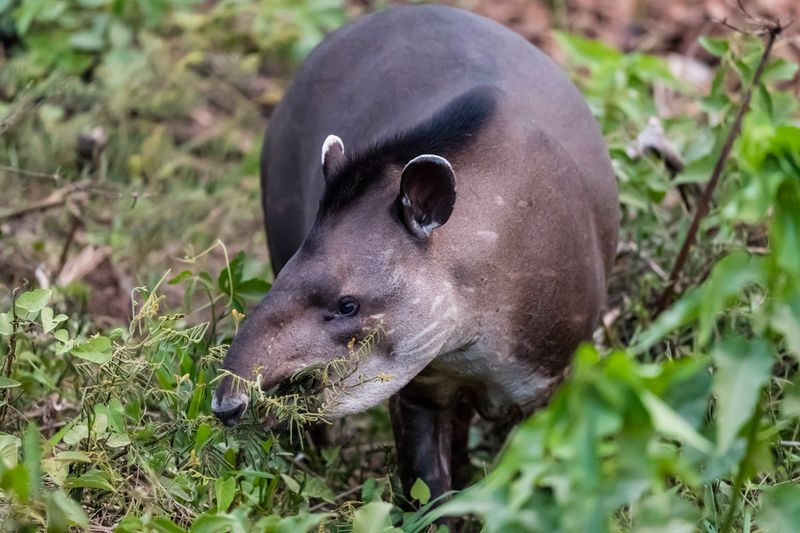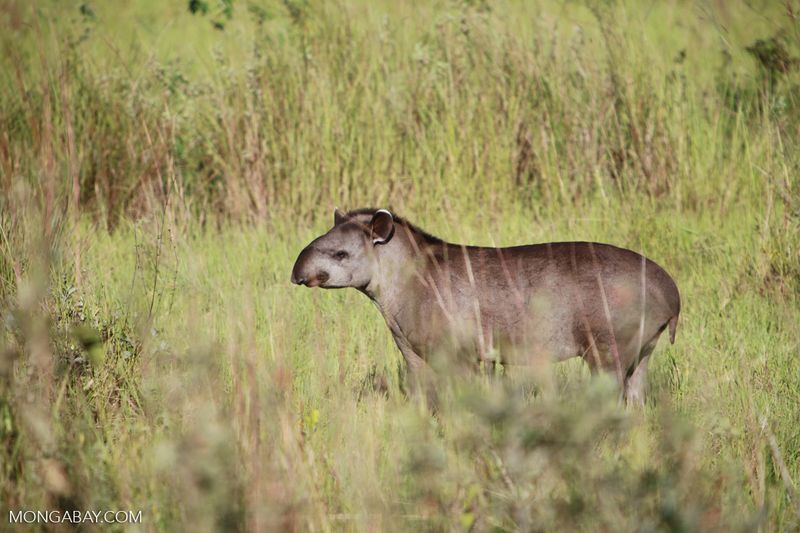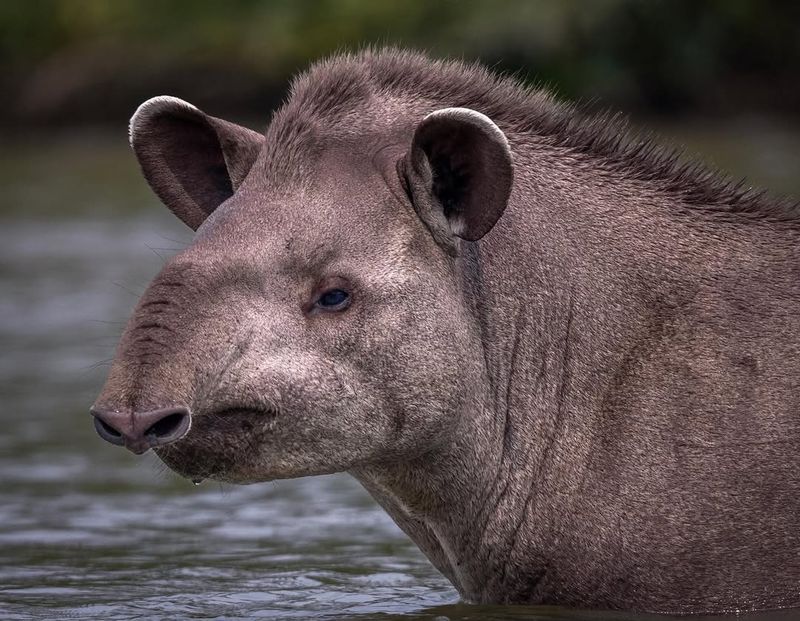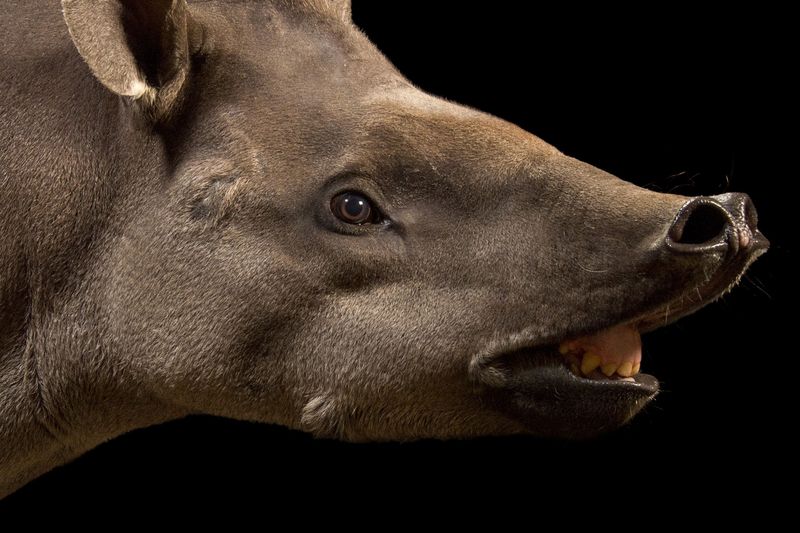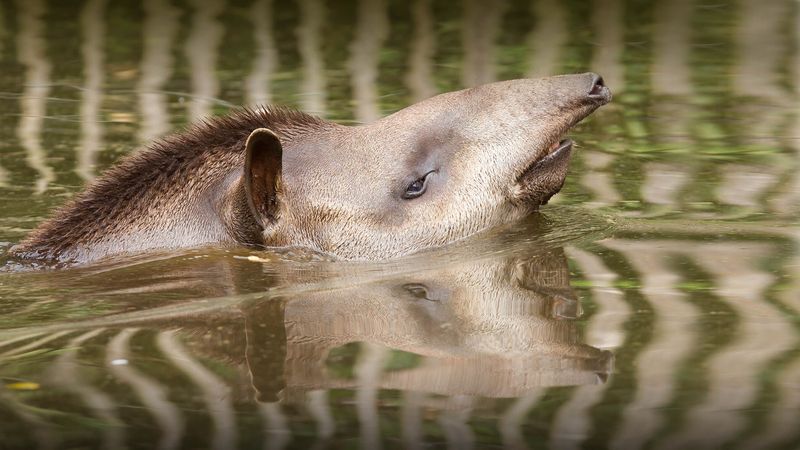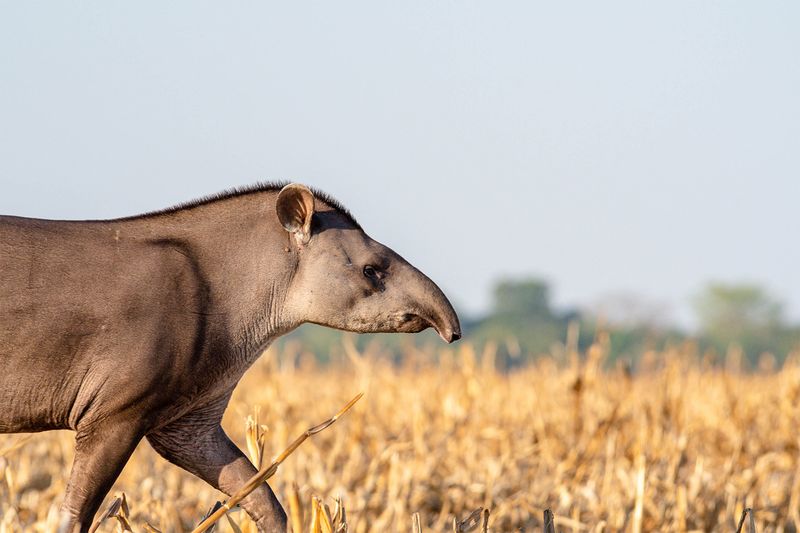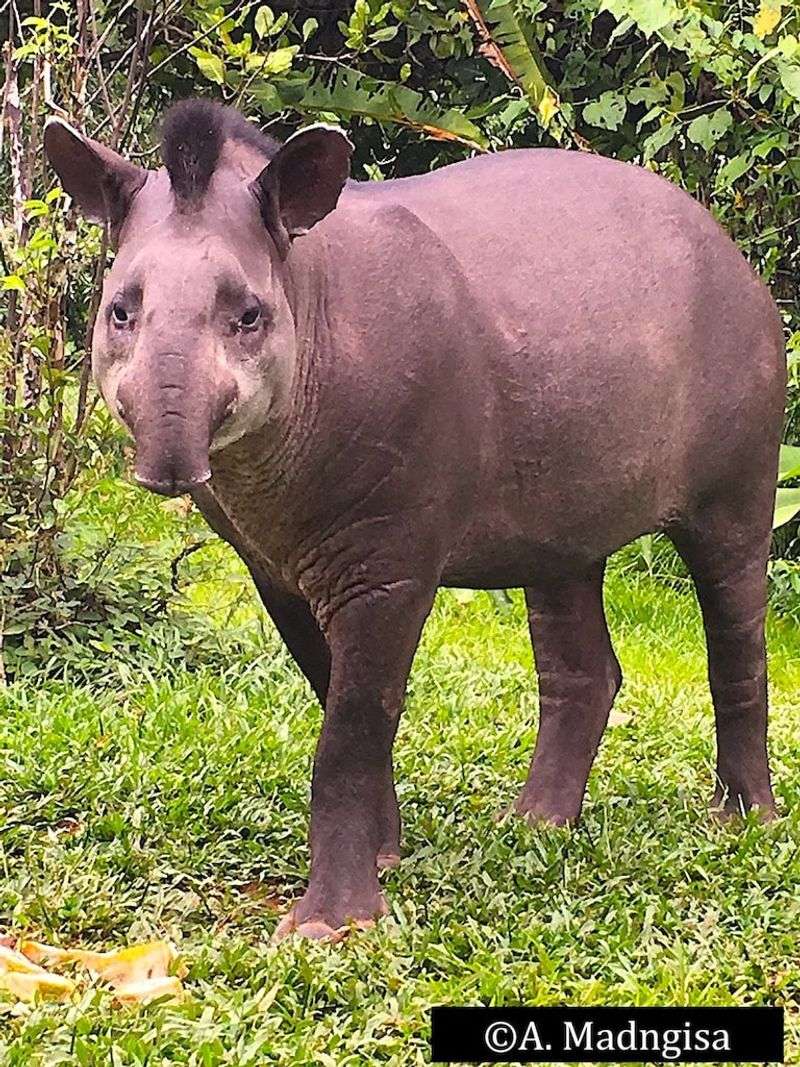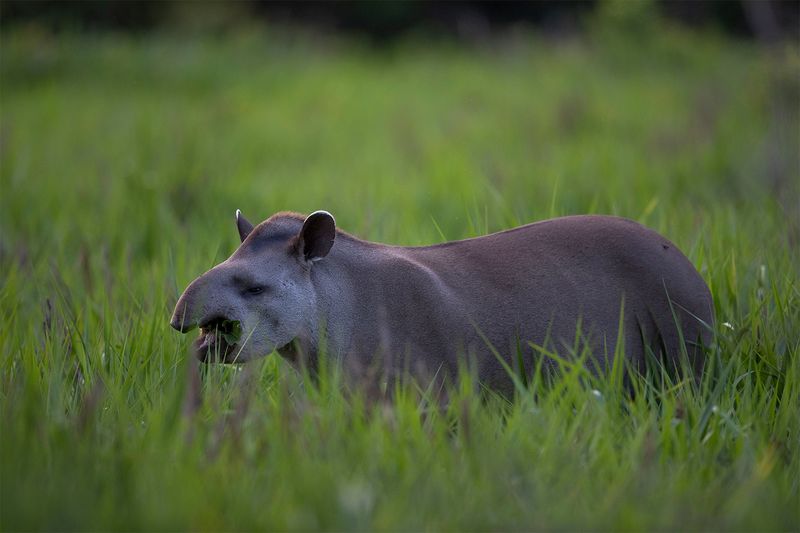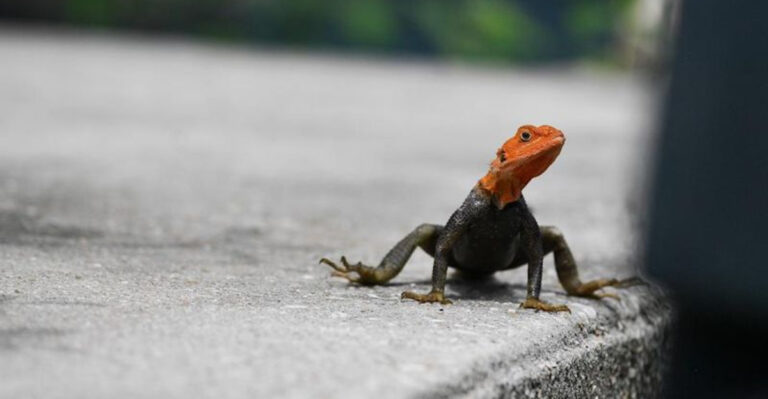Lost For A Century: 15 Incredible Facts About South America’s Largest ‘Extinct’ Mammal
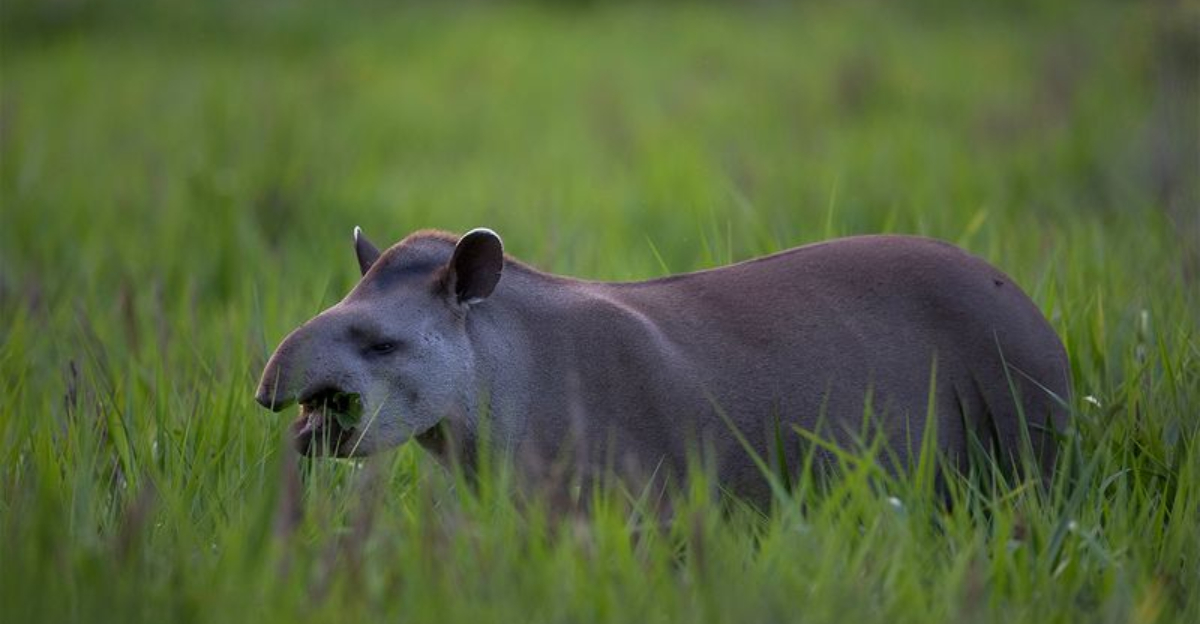
The South American tapir, known scientifically as Tapirus terrestris, is a remarkable creature that has captured the fascination of many due to its size, unique features, and ecological significance.
Often overlooked, these animals play a crucial role in their ecosystems and have an intriguing evolutionary history stretching back millions of years. In this blog post, we explore incredible facts about South America’s largest ‘extinct’ mammal, delving into their physical characteristics, behaviors, and more.
1. Largest Land Mammal In South America
The South American tapir stands as one of the continent’s largest land mammals. Its robust physique can reach up to 8 feet (2.4 meters) in length, with a weight ranging significantly between 330 and 710 pounds (150 to 320 kilograms).
This impressive size not only makes the tapir a formidable presence in its habitat but also a pivotal component of the forest ecosystem. The tapir’s size is complemented by a sturdy framework, necessary for navigating the dense forest terrain it calls home.
Interestingly, despite its size, the tapir is often elusive, blending seamlessly into its surroundings due to its solitary nature. This attribute helps it evade predators while it forages for food.
Observers often note the tapir’s surprising agility and grace, traits that add to its mystique. Overall, its size is both a survival advantage and a testament to its evolutionary success in South America’s forested regions.
2. Prehensile Snout
The South American tapir’s most distinctive feature is its prehensile snout, a flexible extension that resembles a small trunk. Much like an elephant’s trunk, this snout is remarkably versatile, allowing the tapir to grasp leaves, fruit, and aquatic plants with ease.
This adaptation is crucial for its browsing lifestyle, enabling it to access food sources that might otherwise be out of reach. The snout’s mobility is not just limited to feeding; it also plays a role in sensory perception, helping the tapir investigate its environment.
This unique feature is a testament to the tapir’s adaptability and evolutionary ingenuity. In the dense forests they inhabit, the snout helps them navigate and interact with their surroundings, making it an indispensable tool.
Its functionality is complemented by the tapir’s keen sense of smell, further enhancing its ability to thrive in the wild. This combination of form and function highlights the tapir’s evolutionary adaptability.
3. Excellent Swimmers
Tapirs are not just land-dwelling giants; they are also excellent swimmers, a skill that serves them well in their forested habitats. These animals frequently take to the water, using their impressive swimming abilities to escape predators or simply to cool off in the heat of the day.
Their dense habitats often include rivers and streams, environments where the tapir feels right at home. Swimming also aids in maintaining their buoyancy and provides a low-resistance method of travel through their surroundings.
Additionally, being adept swimmers allows them to reach food sources across water barriers, further expanding their dietary options. The tapir’s affinity for water is not just a survival tactic; it also plays a role in their playful behavior, as they are often observed frolicking in the water.
Their swimming skills, combined with their sturdy build, make them well-adapted to the challenges and opportunities presented by their environment.
4. Herbivorous Diet
The diet of the South American tapir is purely herbivorous, consisting primarily of leaves, shoots, fruit, and aquatic vegetation. As browsers, they play a critical role in shaping the vegetation dynamics of their habitat.
This feeding behavior helps maintain the ecological balance, contributing to the health and diversity of the forest ecosystem. Tapirs use their flexible snout to reach various plant materials, demonstrating an impressive ability to adapt to seasonal changes in food availability.
Their constant foraging also aids in the dispersal of seeds, promoting regeneration and growth of new plant life. The diversity in their diet reflects the tapir’s adaptability and its crucial role in the ecosystem as both a consumer and a facilitator of plant reproduction.
This dietary habit not only sustains the tapir’s health but also ensures the continuity of its habitat, highlighting the interconnectedness of these creatures with their environment. Their eating habits underscore their importance in ecological sustainability.
5. Key Seed Dispersers
South American tapirs are vital to their ecosystems as key seed dispersers, a role that significantly impacts forest regeneration and biodiversity. By consuming a variety of fruits, tapirs inadvertently aid in spreading seeds across vast distances, thanks to their extensive home ranges.
This seed dispersal is facilitated by their digestive system, which processes the seeds in such a way that they are ready to germinate upon excretion. As the tapirs move through their habitat, they deposit these seeds in different locations, promoting plant diversity and forest resilience.
This process not only benefits the tapirs by ensuring an ongoing supply of food sources but also supports numerous other species that depend on the forest. This ecological service underscores the tapir’s importance in maintaining healthy forest ecosystems.
Through their natural behaviors, tapirs contribute to the vitality and sustainability of their habitats, making their conservation critical for ecological balance. Their seed dispersal activities are indispensable for forest health.
6. Solitary And Nocturnal
South American tapirs are predominantly solitary and exhibit nocturnal behavior, preferring the cover of darkness to conduct their activities. This lifestyle choice is an adaptation to avoid predators and reduce competition for resources.
By being active at night or during dawn and dusk, tapirs can exploit food sources with minimal disturbance. Their solitary nature means they are rarely seen in groups, except during mating or when a mother is with her young.
This preference for solitude is reflected in their territorial behavior, where individuals mark their ranges with urine and feces to ward off others. The night offers a quieter, safer environment for the tapirs to forage, reducing the risk of encounters with predators.
This nocturnal habit not only aids in their survival but also allows them to maintain a low profile in their dense forest habitats. Their solitary and nocturnal lifestyle is a strategic adaptation to the challenges of their environment, highlighting their resilience and resourcefulness.
7. Thick, Tough Skin
The South American tapir is equipped with thick, tough skin, an adaptation that provides essential protection against the threats of the dense forest. This durable hide acts as a barrier against predators, thorny vegetation, and insect bites, allowing the tapir to move confidently through its environment.
The skin’s toughness is a crucial survival trait, minimizing injuries from encounters with natural obstacles or aggressive animals. It also provides insulation, helping regulate body temperature in the variable climates of their habitats.
This protective feature is a physical testament to the tapir’s evolutionary success, enabling it to navigate and survive in challenging landscapes. The tapir’s skin, combined with its robust build, offers a formidable defense mechanism, ensuring its endurance in the wild.
This protective adaptation not only serves the tapir’s immediate survival needs but also underscores its role as a resilient inhabitant of South America’s forests. Their thick skin is a vital component of their survival strategy.
8. Natural Predators
In the wild, South American tapirs face threats from several formidable natural predators, including jaguars, pumas, caimans, and large anacondas. These predators play a significant role in the tapir’s life, influencing its behavior and survival strategies.
The presence of such predators necessitates the tapir’s solitary and nocturnal habits, as these tactics reduce the likelihood of encounters. The jaguar, a top predator, poses one of the greatest threats due to its strength and stealth. Similarly, pumas are adept hunters capable of preying on tapirs.
Aquatic threats like caimans and anacondas add to the tapir’s challenges, especially when navigating water bodies. To counter these threats, tapirs rely on their keen senses, thick skin, and swimming abilities.
The interaction between tapirs and their predators is a crucial aspect of the ecological balance within their habitats. Understanding this dynamic is essential for appreciating the complexity of the ecosystems that tapirs inhabit. Their survival strategies reflect their adaptability.
9. Long Lifespan
The South American tapir boasts a relatively long lifespan for a wild mammal, with individuals living up to 25–30 years in the wild, and even longer in captivity. This extended lifespan is indicative of their adaptability and resilience in their natural habitats.
In the wild, their longevity is supported by their solitary, cautious behavior and their ability to evade predators. In captivity, tapirs benefit from regular feeding, veterinary care, and the absence of predators, often leading to an increased lifespan.
Their extended life allows for prolonged reproductive opportunities, contributing to the stability of their population. This aspect of their biology is vital for conservation efforts, as it provides a window for population recovery and stability over time.
The tapir’s lifespan is a testament to its evolutionary fitness and adaptability to diverse environmental conditions. By understanding and supporting their longevity, conservationists can better plan strategies for their preservation and the protection of their habitats.
10. Distinctive Young
The young of the South American tapir are distinctively marked, with brown fur adorned with white spots and stripes. This unique pattern serves as camouflage in their dense forest habitats, helping them blend into the dappled light of the underbrush.
This natural disguise is crucial for their survival, as it reduces their visibility to predators during their vulnerable early months. The spotted and striped pattern gradually fades as the tapir matures, transitioning to the solid coloring of adults.
This change in appearance is a fascinating aspect of their growth and development, reflecting their adaptation to their environment. The visual transition from juvenile to adult also signifies their growing independence and ability to navigate the world on their own.
These markings not only provide young tapirs with a survival advantage but also highlight the intricate adaptations that have evolved in response to environmental pressures. The distinctive appearance of tapir young is a captivating feature of their life cycle.
11. Related To Horses And Rhinos
Despite their pig-like appearance, South American tapirs are more closely related to horses and rhinoceroses. All three belong to the order Perissodactyla, known as odd-toed ungulates. This connection underscores the tapir’s place within a diverse group of large, hoofed mammals.
The evolutionary link is evident in their shared physical characteristics, such as a similar limb structure and dental patterns. This relationship offers fascinating insights into the evolutionary history of ungulates, showcasing how different environments have shaped their development.
Understanding this connection helps explain some of the tapir’s unique features, such as its prehensile snout, which parallels certain adaptations in its relatives. The evolutionary relationship among these animals highlights the adaptability and diversity of ungulates over millions of years.
This shared ancestry with horses and rhinos emphasizes the tapir’s distinct evolutionary path and its significance in the broader context of mammalian evolution. Their lineage provides a glimpse into the dynamic history of life on Earth.
12. Endangered Status
The South American tapir is currently listed as Vulnerable by the International Union for Conservation of Nature (IUCN), reflecting the significant threats it faces in the wild. Habitat destruction, driven by deforestation and human encroachment, poses the most substantial risk to tapir populations.
Additionally, hunting and illegal poaching contribute to their declining numbers. This endangered status highlights the urgent need for conservation efforts to protect their habitats and ensure their survival. The loss of tapirs would not only affect the species itself but also the ecological balance of their habitats.
Tapirs play a crucial role in seed dispersal and vegetation dynamics, making their conservation vital for maintaining healthy ecosystems. Efforts to protect tapirs include habitat restoration, anti-poaching measures, and public awareness campaigns.
These initiatives aim to stabilize tapir populations and preserve their natural environments. Understanding the threats to tapirs is essential for developing effective conservation strategies that support their long-term survival.
13. Strong Sense Of Smell
The South American tapir possesses an exceptionally strong sense of smell, compensating for its relatively poor eyesight. This keen olfactory ability is crucial for navigating their dense forest habitats, where visibility is often limited.
The tapir relies on its sense of smell to locate food, identify potential threats, and communicate with other tapirs.
This sensory adaptation is vital for their survival, enabling them to detect changes in their environment quickly. The tapir’s olfactory prowess also plays a role in breeding, as individuals can identify mates through scent.
This reliance on smell underscores the importance of sensory adaptations in the tapir’s life, helping them thrive in complex environments. By understanding and appreciating the tapir’s sensory capabilities, we gain insight into their behavior and ecological role.
Their strong sense of smell is a testament to the evolutionary adaptations that have enabled them to survive and prosper in the diverse landscapes of South America.
14. Communicate Through Whistles
Communication among South American tapirs is facilitated through high-pitched whistles, a unique form of vocalization particularly common between mothers and their young. These whistles serve various purposes, from maintaining contact to signaling distress or alerting to nearby threats.
This method of communication is especially important in the dense forest habitats tapirs inhabit, where visibility is limited. The use of whistles allows tapirs to convey messages over considerable distances without attracting unwanted attention from predators.
In addition to vocalizations, tapirs also rely on other forms of communication, such as scent marking, to establish territories and interact with other tapirs. This combination of auditory and olfactory signals highlights the complexity of tapir communication.
Understanding these behaviors is crucial for conservation efforts, as it provides insight into their social structures and interactions. The ability to communicate effectively is essential for tapir survival, facilitating coordination and cohesion within their solitary yet interconnected lives.
15. Ancient Species
The lineage of the South American tapir stretches back millions of years, making it one of the oldest mammalian species still in existence. Fossil records trace their ancestry to the Eocene epoch, around 50 million years ago, highlighting their long-standing presence on Earth.
This ancient lineage reflects the tapir’s remarkable adaptability and evolutionary success over countless environmental changes. Throughout their history, tapirs have endured significant climatic shifts and habitat transformations, developing unique adaptations that have enabled their survival.
Their persistence through geological epochs emphasizes the tapir’s resilience and the broader narrative of mammalian evolution. By studying tapirs and their ancestors, scientists gain valuable insights into the evolutionary pathways that have shaped today’s biodiversity.
The ancient heritage of tapirs underscores their importance as a living link to the past, offering a window into the evolutionary processes that have governed life on Earth for millions of years. Their enduring legacy is a testament to the dynamic nature of evolution.

